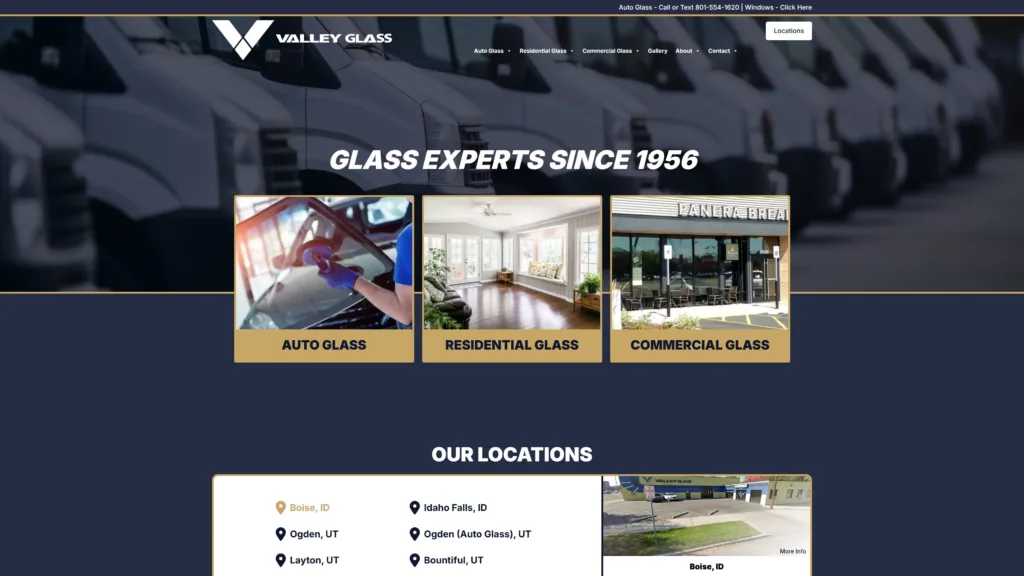
Thanks to our fast-paced digital world, our attention spans — and patience — are shrinking. When we click on something, we expect it to load almost instantly; if it takes too long, we move on to something else. Because of this behavior, page load time doesn’t just affect user experience — it also directly impacts SEO.
If you’re looking for ways to improve your SEO, keep reading to learn how load time influences search engine rankings, some common causes of slow loading, and how to monitor and improve your page speed.
Why Google Cares About Page Load Time
Page load time is exactly what it sounds like: the time it takes for a webpage to fully load. This metric significantly affects the user experience — the faster a page loads, the better the UX, which search engines like Google value.
Google’s Core Web Vitals measure the user experience by evaluating loading performance, interactivity, and visual stability. These metrics include:
- Largest Contentful Paint (LCP): The amount of time it takes for the largest element on a page to become visible. This should be no more than 2.5 seconds.
- Interaction to Next Paint (INP): How long it takes for the browser to respond to the user’s first interaction with the page. This should be less than 200 milliseconds.
- Cumulative Layout Shift (CLS): Measures the extent of unexpected layout shifts as the page loads.
Page load time affects LCP and FID in particular. The longer it takes for a page to load, the lower these scores will be, corresponding to a worse user experience.
How Page Speed Affects Search Engine Rankings
Search engines prioritize results that have proven to be relevant, useful, and engaging. Poor page load time affects rankings by:
- Increasing bounce rates: When users abandon slow-loading pages, it signals to the search engines that the site is poor quality.
- Decreasing dwell time and engagement: You want to keep visitors on your site as long as possible. Slow loading causes users to click away, decreasing overall dwell time and engagement.
- Impacting conversions: Sites with lower conversion rates due to a poor user experience can correlate with a lower perceived site value.
The bottom line is that when your site takes forever to load, it makes it harder for users to get the information they need or perform the desired actions. If they get frustrated enough, they’ll leave your site entirely, signaling to search engines that your site isn’t as valuable as others.

Common Causes of Slow Page Load Times
Now that you understand the impact of page load time on SEO, let’s go over some common causes of sluggish loading:
- Large, unoptimized images
- Too many HTTP requests
- A lack of browser caching
- Poor hosting/server response times
- Too many plugins or scripts
- Render-blocking JavaScript and CSS
How to Improve Page Load Time
So, given these common causes of slow loading, how do you fix them?
- Compress and optimize images: At PDM, most of the images we use fit within 1366 x 768 pixels. We’ve also started using the .webp format, which allows for smaller file sizes.
- Minimize JavaScript, CSS, and HTML: Clean up your code and get rid of anything that’s not necessary.
- Use a content delivery network (CDN): By caching content close to end users, CDNs improve load times.
- Leverage browser caching: Enable caching on your site to enhance performance on subsequent visits.
- Enable lazy loading for images and videos: This delays loading of certain elements until the user scrolls to them.
- Choose a reliable hosting provider: Ensure your hosting provider has enough processing power and bandwidth to handle the traffic.
- Reduce redirects: Whenever possible, eliminate URL redirects. Instead, link to the final URL.

Tools for Monitoring and Improving Page Speed
If you’re not a web developer, it can be hard to identify why your page load times are suffering and understand how to fix it. Fortunately, there are a number of online tools that can give you guidance.
Google PageSpeed Insights makes it easy to view Core Web Vitals and get specific optimization suggestions — plus, it’s completely free!
There are other paid tools available that offer a wider range of features, some of which offer trial periods or free plans so you can try before you buy. These services include GTmetrix, Pingdom, and WebPageTest.org, among others.
Get Help from the SEO Experts at Performance Driven Marketing
If you truly want to maximize your SEO and take your site to the next level, you need marketing services from the experts. Our team at Performance Driven Marketing can help you improve page load time, user experience, and conversion rates, optimizing your website’s performance. Contact us today for a free consultation!









